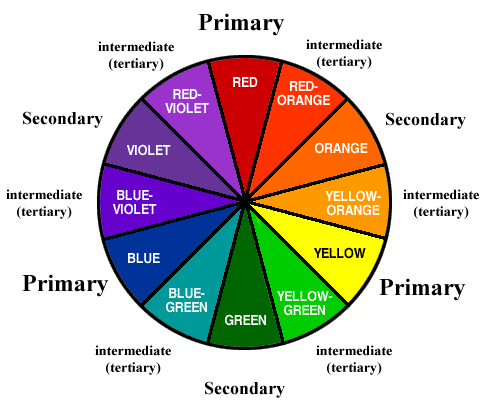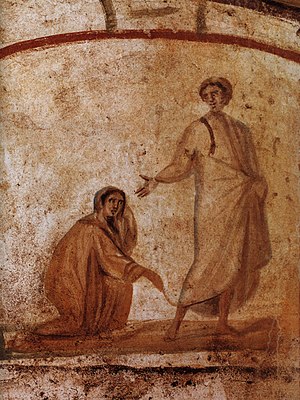stencils is a thin sheet of cardboard, plastic, or metal with a pattern or letters cut out of it, used to produce the cut design on the surface below by the application of ink or paint through the holes. Stencil is more accurate than actually painting when it come to mass production or work with less time.
Wednesday, June 27, 2018
Art Blog 6
Stencils
stencils is a thin sheet of cardboard, plastic, or metal with a pattern or letters cut out of it, used to produce the cut design on the surface below by the application of ink or paint through the holes. Stencil is more accurate than actually painting when it come to mass production or work with less time.

stencils is a thin sheet of cardboard, plastic, or metal with a pattern or letters cut out of it, used to produce the cut design on the surface below by the application of ink or paint through the holes. Stencil is more accurate than actually painting when it come to mass production or work with less time.
Art Blog 5
Street Art/Graffiti

Art Blog 4
Color theory
color theory is about what are the different colors and the color schemes
there are 12 colors in the color wheel.
3 primary : 3 colors that make up every other color : red, yellow, blue
3 secondary : 3 colors that are made up of two of the primary color : orange, green, violet
6 tertiary : 6 colors made up of primary and secondary colors : red-orange, yellow-orange, yellow-green, blue-green, blue-violet, red-violet.
Color schemes are the relationship between different colors. There are six main types of color schemes
Complementary: color opposite to each other
Rectangle: two pairs of complementary colors that doesn't have same distance between each of the colors
Square: two pairs of complementary colors that have same distance between each of the colors
Triadic: 3 colors that have equal distance between each other
Analogous: color next to each other
Split Complementary: one color with two analogous color of the complement but not the complement.
Value is the lightness or darkness of colors. Intensity is the brightness and dullness of colors.
Shade is to add black to a color
Tint is to add white to a color
Tone is to add grey to a color
color theory is about what are the different colors and the color schemes
there are 12 colors in the color wheel.

3 primary : 3 colors that make up every other color : red, yellow, blue
3 secondary : 3 colors that are made up of two of the primary color : orange, green, violet
6 tertiary : 6 colors made up of primary and secondary colors : red-orange, yellow-orange, yellow-green, blue-green, blue-violet, red-violet.
Color schemes are the relationship between different colors. There are six main types of color schemes
Complementary: color opposite to each other
Rectangle: two pairs of complementary colors that doesn't have same distance between each of the colors
Square: two pairs of complementary colors that have same distance between each of the colors
Triadic: 3 colors that have equal distance between each other
Analogous: color next to each other
Split Complementary: one color with two analogous color of the complement but not the complement.
Value is the lightness or darkness of colors. Intensity is the brightness and dullness of colors.
Shade is to add black to a color
Tint is to add white to a color
Tone is to add grey to a color
Sunday, June 17, 2018
Art Blog 3
Pop Art
Facts, History, Major Artists.
Pop art first start in Britain in the 1950s then spread to NewYork in the mid 50s and ended in the 1960s.
Pop Art presented a challenge to traditions of fine art by including imagery from popular and mass culture, such as advertising, comic books and mundane cultural objects. "Pop Art are based on modern popular culture and the mass media."
Pop Art uses a lot of colors. Techniques like silkscreen printing was used by Andy Warhol and was the most popular technique.
Pop art is the reaction to the ideas of abstract expressionism.
When thinking of Pop Art, we think on Andy Warhol.
Andy Warhol was the most successful artist in New York and he was the one who bring the Pop CUlture into life. His Major work like the screenprinted images of Marilyn Monroe, soup cans, and sensational newspaper stories. His first work that catches people attention was the soup can where he put up soup cans picture with little different in each picture.
Wednesday, June 13, 2018
Art blog 2
When was watercolor invented?
Watercolor can be described of as water added with color or pigments. The use of water added with pigments goes back to the caveman. There is no exact date of when the caveman starts to use watercolor but it was sure very long ago before us. These Primitive men used pigments mixed with water to create cave paintings by applying the paint with fingers, sticks, and bones. After that, the ancient Egyptians used water-based paints to decorate the walls of temples and tombs and created some of the first works on paper, made of papyrus.
Who is a watercolor artist you like?
I like Van Gogh's watercolor painting, the Langlois Bridge at Arles. So my preferred artist is Van Gogh. His skills in outlining and adding details with the water and the bridge. His skills in making the clouds with his techniques and many more.
The techniques for watercolor and your strengths and weaknesses with this media.

In class, we learned around 14 techniques.
1. Flat wash
2. Wet on Wet
3. Graded wash
4. Wax resist
5. Dry brush
6. 3 colors graded
7. Sgraffito
8. Dabbing with tissue
9. Wet on dry
10. Straw
11. Salt
12. Spattering
13. Alcohol
14. Stamping
My worst one will be the alcohol because I cannot make the paint spread out from the alcohol but it will mix together leaving a little alcohol line but not good enough to be seen without paying very close attention.
My favorite technique is the graded wash because the change in value is very appealing and looks very good in my perspective and I think that I have done a good job.
Interesting facts/trivia/info about watercolor
wWater color is not hard to make. You can make your own watercolor by 1. A pile of pure ground pigment on a glass palette. 2. Add gum arabic. 3. Add water. 4. Mix with a spatula. Adding a few drops of rubbing alcohol helps the pigments disperse. 5. The result resembles watercolor from tubes. 6. The resulting watercolor paint applied to watercolor paper using a paintbrush.
Watercolor can be described of as water added with color or pigments. The use of water added with pigments goes back to the caveman. There is no exact date of when the caveman starts to use watercolor but it was sure very long ago before us. These Primitive men used pigments mixed with water to create cave paintings by applying the paint with fingers, sticks, and bones. After that, the ancient Egyptians used water-based paints to decorate the walls of temples and tombs and created some of the first works on paper, made of papyrus.
Who is a watercolor artist you like?
I like Van Gogh's watercolor painting, the Langlois Bridge at Arles. So my preferred artist is Van Gogh. His skills in outlining and adding details with the water and the bridge. His skills in making the clouds with his techniques and many more.
The techniques for watercolor and your strengths and weaknesses with this media.

In class, we learned around 14 techniques.
1. Flat wash
2. Wet on Wet
3. Graded wash
4. Wax resist
5. Dry brush
6. 3 colors graded
7. Sgraffito
8. Dabbing with tissue
9. Wet on dry
10. Straw
11. Salt
12. Spattering
13. Alcohol
14. Stamping
My worst one will be the alcohol because I cannot make the paint spread out from the alcohol but it will mix together leaving a little alcohol line but not good enough to be seen without paying very close attention.
My favorite technique is the graded wash because the change in value is very appealing and looks very good in my perspective and I think that I have done a good job.
Interesting facts/trivia/info about watercolor
wWater color is not hard to make. You can make your own watercolor by 1. A pile of pure ground pigment on a glass palette. 2. Add gum arabic. 3. Add water. 4. Mix with a spatula. Adding a few drops of rubbing alcohol helps the pigments disperse. 5. The result resembles watercolor from tubes. 6. The resulting watercolor paint applied to watercolor paper using a paintbrush.
Monday, June 11, 2018
Art blog 1
What is the history of ideas?
The history of ideas is a field of research about expression, preservation, and change of human ideas over time.History of Ideas - ART:
Art started long ago as long as the medieval time. Back then, art was used as a form of advertisement to spread religious ideas.
 this image shows a picture of Jesus helping a woman. This helps people know about Jesus as kind and caring. Then after that, art was brought into politics, used as propaganda toward certain government.
this image shows a picture of Jesus helping a woman. This helps people know about Jesus as kind and caring. Then after that, art was brought into politics, used as propaganda toward certain government.  This picture is an example of an artwork that is used for political means. Then came a guy named Théophile Gautier who argues that art shouldn't be use for religious or political means, but instead, should be used as art. "Art must free itself from the poisonous agendas of religions and governments." which he stated in French as
This picture is an example of an artwork that is used for political means. Then came a guy named Théophile Gautier who argues that art shouldn't be use for religious or political means, but instead, should be used as art. "Art must free itself from the poisonous agendas of religions and governments." which he stated in French as
"L'art pour L'art" which means art for art's sake
What is Art?
Art is how human express ideas or creativity. In visual form such as painting or sculptures.In performing forms such as acting or singing.
Subscribe to:
Comments (Atom)

